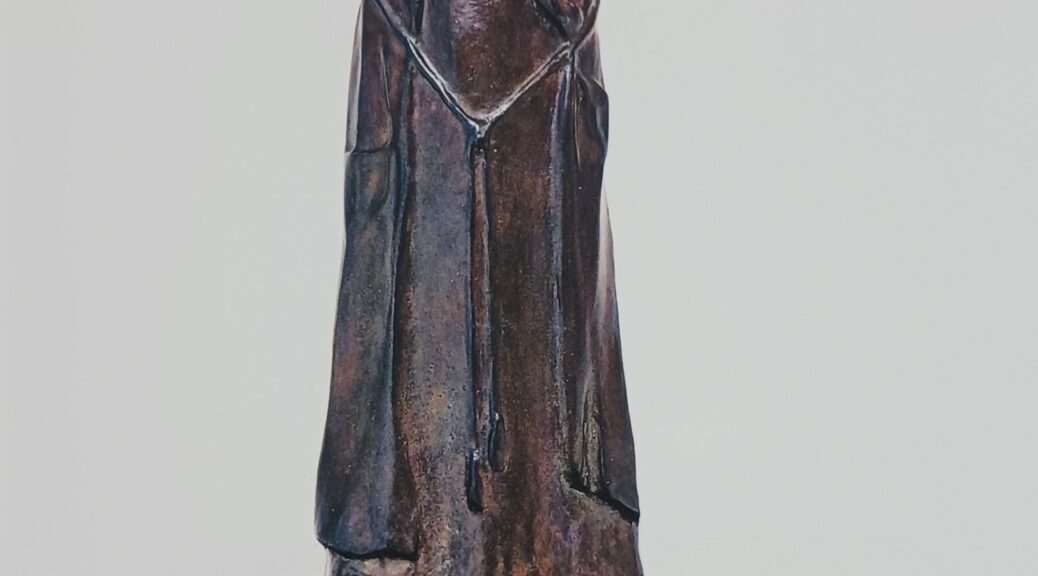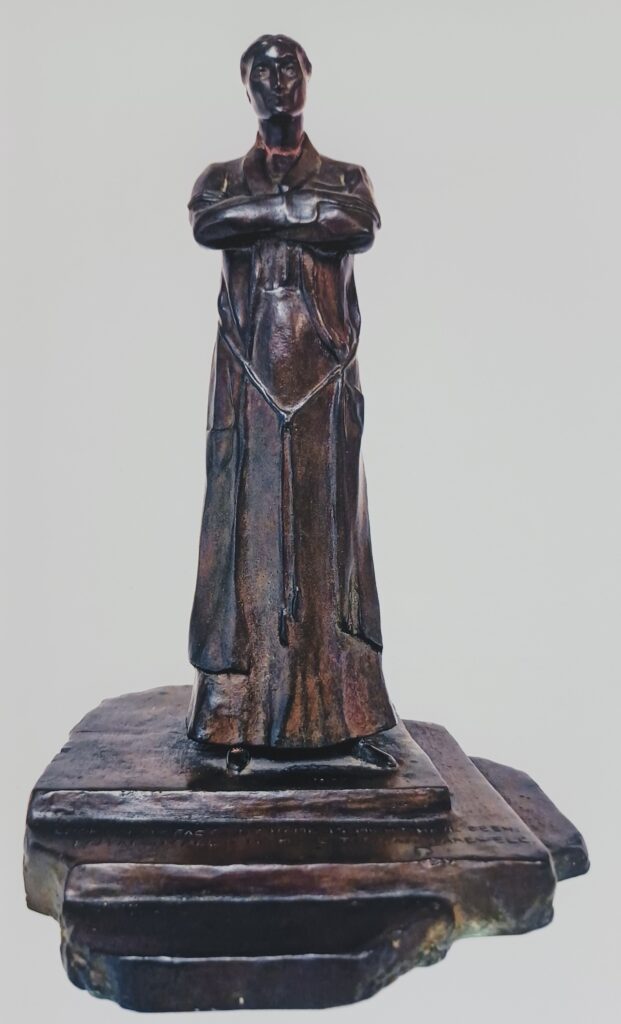
Statue of Radclyffe Hall

Artist: Una Troubridge
Media: Bronze
Date & Location: c. 1915-1963
Image Source: Queer Britain
Significance to Queer Art History
This is a statue of Radclyffe Hall by her partner of twenty-nine years, Una Troubridge. They met in 1915 and lived together from 1916 until Hall’s death in 1943.
Radcylffe Hall is most well-known for having written A Well of Loneliness, which tells the life story of its protagonist, Stephen Gordon. It has become famous as a foundational lesbian novel and it also offers insight into histories of trans* masculinity and genderfluidity (as does Hall who was known as ‘John’ among friends).
A Well of Loneliness was banned for “obscenity” in 1928 and kept from being republished until 1949 (a ban protested by Virginia Woolf, herself an important figure in queer ‘hirstory’).
Una Troubridge was a sculptor alongside being an author and translator. She also had a daughter named Andrea from her marriage to her previous partner Ernest Troubridge.
Una herself was once the subject of a work of art by an iconic figure in lesbian art history. Romaine Brooks painted a portrait of Una in 1924.
When it came to Una sculpting her partner, she captured Radclyffe Hall standing tall with her arms crossed. Underneath she carved a variation on the poem Nevermore by Dante Gabriel Rossetti: Look in my face; my name is Might-have-been; I am also call’d No-more, Too-late, Farewell.
It is only very recently that this statue has been shown to the public. It was unveiled earlier this year at Queer Britain in London (UK) where it now stands proudly among the rest of their beautiful collection.



